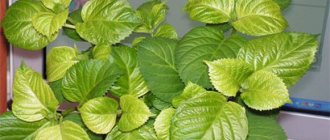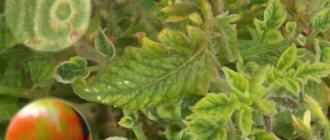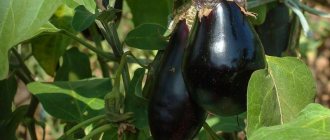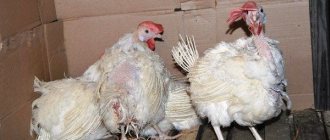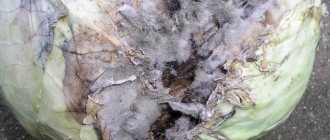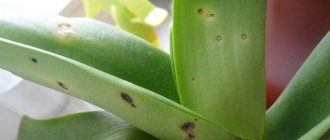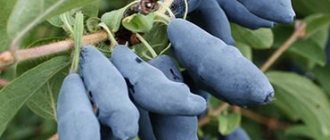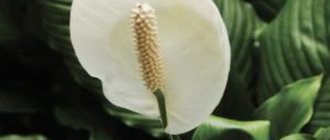Eggplants are inherently amazing vegetables. They combine not only taste and universal qualities, but also a number of useful components that are so necessary for human health. However, in order to get these fruits on their plot, every gardener will have to make a lot of effort. The fact is that there are a large number of eggplant diseases that negatively affect their yield. What kind of diseases these are, for what reasons they arise and how to deal with them will be described in detail in this article.
The main causes of diseases in eggplants
A plant can get sick or be attacked by pests at different ages: at the seedling stage, after planting in open ground, during fruiting.
The following main causes of the disease can be identified:
- failure to comply with crop rotation conditions;
- unsuitable site or conditions in the greenhouse;
- improper watering;
- errors in the composition of the fertilizer or its deficiency;
- unfavorable weather conditions.
Why do eggplant leaves wither in a greenhouse?
Many gardeners grow eggplants in a greenhouse: there are no drafts or sudden temperature fluctuations. Despite this, plant leaves often begin to wither. This happens for various reasons :
- High humidity level . Since the space in the greenhouse is very limited, water evaporates gradually increases the humidity level to levels unacceptable for the crop (above 75%).
- Incorrect watering . If the humidity level in the greenhouse is high, the eggplants will need less water.
- Lack of air . Due to the limited space in the greenhouse, young seedlings simply do not have enough oxygen. Therefore, they create high-quality ventilation by regularly airing the room.
Seedling diseases
There are several types of diseases that can harm eggplants at the stage of their development, that is, seedlings. Moreover, the culprits of their occurrence, in addition to improper care, are contaminated soil or untreated seed material. The occurrence of diseases can be determined by the plants themselves. At the initial stage of infection, the leaves of the seedlings begin to turn yellow. At later stages of infection, the roots of plants wither, which leads to their death. To avoid these negative consequences, when growing eggplants, it is important to carry out pre-planting preparation of soil and seeds.
Processing of seed material:
- Eggplant seeds are disinfected for 20 minutes. in a strong solution of potassium permanganate.
- After disinfection, the seeds are washed with cold water.
- To remove essential oils, planting material is doused with boiling water.
- The seeds are soaked for a day in any nutrient solution for eggplants.
After the specified time has passed, the seed material is washed well again in running water and placed on a damp substrate for germination.
In order to disinfect the soil, it will be enough to warm it up at a temperature of +100 degrees, and wash the pots with soap and pour over boiling water.
The above manipulations will serve as good prophylaxis in preventing the development of diseases. If mistakes are made, the seedlings may develop the following diseases.
Invasive diseases of eggplant
Invasive diseases are caused by pests that infect a crop. Below are the indicated eggplant diseases and photos of the affected plants.
1. Nematodes. Very small worms, up to 1 mm in length, penetrating through contaminated soil. They cannot tolerate increased temperatures (they die at 40 degrees), so it is necessary to calcinate the soil before planting the seeds. Also, nematode eggs can be found in seeds, so it is better to carry out thermal disinfection of the seeds.
Nematodes can be of three types:
1) Leaf nematode, when it appears, dry, chaotically scattered spots appear on the leaves; in addition, the leaf nematode is a carrier of some viruses.
2) Stem nematode, affecting the entire plant. The nematode enters the plant through the roots. It releases toxins that clog the channels. The plant may eventually die.
3) Root-knot nematode. It is considered the most dangerous nematode, as it spreads not only through contaminated soil, but also through garden tools and planting containers. In its habitat, on the roots of the plant, swellings with a yellow and then brown color form. Due to these swellings, the roots do not function normally and the plant does not receive nutrients. It is useless to treat nematodes; the only way to get rid of these pests is to dispose of the plant.
2. Whitefly.
This harmful insect looks like a small (up to 1.5 mm) white butterfly. This pest reproduces very quickly, laying tubs of eggs on the inside of the plant leaf. It indicates its presence as follows: the leaves of the crop lose color and shape, a black coating appears on the lower leaves, and eventually fall off, along with the flowers. To combat whiteflies, use insecticides, more than once.
3. Aphids.
A small insect with wings. It feeds on plant sap. It is a carrier of viral diseases. When infected with aphids, the tops of the crop and leaves curl and turn yellow. To combat, just like with whiteflies, use an insecticide.
4. Spider mite.
A very small insect, up to 0.5 mm, loves dry weather. You can find it on the back of the sheet. If an eggplant is attacked by a spider mite, it looks like this: small dark dots appear on the leaves, then the leaves turn yellow and dry out. If infected, damaged leaves must be torn off and the crop treated with insecticides. For prevention, in dry weather, spray eggplants with warm water up to twice a week, but do this so that the leaves have time to dry before the cool night.
Yellowness of eggplant leaves
Leaves turn yellow not only on eggplant seedlings. This problem is also typical for mature plants. Most often, yellowness appears due to unsuitable, overly dense peat soil that does not allow air and water to pass through well. Another possible cause may be a deficiency of nitrogen and potassium.
Most often, yellowness on the leaves of eggplant seedlings is caused by the use of an unsuitable substrate for this crop.
To avoid this, eggplant seeds are planted in special soil for seedlings. Ordinary soil from the garden will not work, since the crop is very sensitive to the acid-base balance and does not tolerate the slightest deviation in one direction or the other. Before planting in the ground, the seedlings must be fed by watering them with a weak solution of nitrogen and potassium fertilizers (they need to be alternated).
For eggplant seedlings, it is best to use soil purchased in a store; in addition, it must be sterilized.
The main causes of seedling diseases
Eggplants belong to the nightshade family. This is a heat-loving plant; it does not tolerate high humidity and sudden temperature changes. Not only adult plants, but also seedlings can be susceptible to diseases. Even experienced vegetable growers have problems growing this crop.
Vegetables such as peppers, tomatoes and eggplants have common diseases and in order to avoid diseases, crop rotation should be observed annually with special pedantry. Eggplant diseases can be caused by any violation of the rules of care, and only a few of them are listed below:
- Containers with seedling material are placed in too dark a place. Lack or complete absence of sunlight can cause serious illnesses.
- Watering is carried out incorrectly, irregularly and unevenly.
- The water thermal regime is disrupted, that is, in a warm and dry atmosphere, the soil is moistened with too cold water.
Having decided to grow eggplant seedlings at home, you should prepare in advance for various difficulties and many questions that arise. The plant is a problematic and rather whimsical crop. In order to make decisions correctly and prevent diseases in time, you should analyze each of them with close attention.
The seedlings have stopped growing
When the grown shoots are ready for picking, they are transplanted into individual containers; from this procedure, the plants are involuntarily exposed to stress. But stunted growth can be caused not only by a stressful situation. Often, when replanting incorrectly, the roots are affected and in order to avoid damage to the root system of the plant, it should be replanted together with a lump of earth.
If the transplanted plants have stopped growing and the leaves of the eggplant seedlings are drying, you need to check the condition of the roots. Each sprout must be carefully removed from the container along with a lump of earth and examined. Sometimes lack of space causes a reddish tint at the roots, and in this case the plant is transplanted into a larger container.
The seedlings are withering
There are times when the leaves of eggplant seedlings wither and curl during the daytime, and in the evening and by morning they return to their normal state. In such a situation, there is no need to be afraid, since in this case there is no problem. But it happens that the leaves of plants droop when they are properly watered and kept at a comfortable temperature. There are a number of reasons for this:
- Excessive watering and waterlogging leads to acidification of the soil. To correct the situation, the plants are moved to other containers, soil is added and watering is carried out frequently but lightly.
- The upper and underground parts of the plant receive different amounts of heat. Typically, the imbalance occurs from drafts and uneven exposure of the sun's rays to the seedling material. In this case, the vessels with seedlings are placed higher or moved to a more illuminated place.
- The root system of seedlings lacks air. This happens when seedlings are located too close to each other and develop in very dense soil. In this situation, only replanting will save the plants.
- When seedling material is taken to a cooler place for hardening, hypothermia may occur. To save the sprouts, water with warm water at room temperature.
- If not only the lower leaves of eggplants wither, but also the root area of the stems darkens, this is the first sign of a serious disease.
Blackleg
One of the most common diseases is black leg in eggplants. This virus lives in the soil and when all conditions favorable for its development are created, it migrates to the crop, in particular to the plant stem at the point where it connects with the soil.
The fungus clogs the seedling's blood vessels and blocks the nutritional functions of the sprout. The lower part of the stem darkens, and a rotting constriction appears in this place. After some time, the plant falls off and dies.
Blackleg is a common plant disease
To avoid this fungal disease, the soil is disinfected before sowing seed material. During the period of growing seedlings, acidic soils should not be used. Avoid over-moistening the soil, too dense plantings, lack of lighting and changes in air temperature. There is also no need to overuse nitrogen fertilizers.
You can get rid of blackleg if the disease is in its early stages and has affected only a small part of the plants. Diseased sprouts are removed along with a clod of earth and fungicides are added to the soil. When there is no desire to use chemicals, the soil is treated with a weak solution of potassium permanganate or a mixture of ash and river sand.
The leaves of the seedlings turn yellow
When the lower leaves of eggplant seedlings turn yellow, these are the first symptoms of a lack of nutrients in the soil. A kind of vitamin deficiency causes the plant to suck all the strength from the lower foliage for further growth. When seedlings are grown in peat, a similar situation often arises. To normalize the life of plants, comprehensive fertilizing should be carried out.
Quite often, due to a lack of nitrogen, the leaves of eggplant sprouts turn yellow and wither. In this case, the problem is also eliminated with the help of fertilizers. Foliage may also turn yellow due to infections or pest attacks. Parasites are visible and before starting to fight them, treatment for infectious diseases should be carried out.
Leaves of eggplant seedlings turn yellow
Light spots appear on seedlings
A lack of potassium in the soil leads to the appearance of white spots on the leaves of eggplant seedlings. Potassium fertilizers applied to the soil will quickly cope with this problem. But often such symptoms appear in plants from an excess of nutrients. Only the correct amount of fertilizing will prevent the formation of spots on the foliage.
Symptoms of light spotting also occur when pests appear. If after examining the plants they are not found, then the reason lies in the lighting. A lighting fixture placed too close to plants can cause burns to delicate foliage. The bright spring rays of the sun also burn delicate greenery and provoke the appearance of spots.
Professional help from gardeners and gardeners Still have questions? Ask, don't hesitateAsk a question
To prevent damage to the foliage, the lamp should be installed at a respectful distance from the plants. If the boxes with seedling material are installed on a window sill or glazed balcony, the window glass is hung with thin transparent curtain material.
Seedling leaves turn white
To understand why eggplant leaves turn white, you must correctly determine the cause of these changes. There are a lot of reasons and only accurate identification and timely elimination will save seedlings from death.
Often the leaves of eggplant seedlings turn white from the sun. Not too attentive vegetable growers water with cold water. It happens that seedlings are affected by powdery mildew. Sometimes young plants are attacked by parasites. The results of the vital activity of insects also lead to the appearance of white spots on the foliage.
There are quite a lot of insects that attack seedlings, and if it is not possible to identify a specific pest, then special fungicides rid the plants of all types of parasites. The chemical industry produces these drugs in an assortment, and in order not to make a mistake when choosing, you should listen to the advice of experienced vegetable growers or specialists.
There are many reasons why white spots appear, but it is important to know. You should not get rid of seedlings with such lesions. Timely treatment will save the plants, they will be cured and in terms of productivity they will be able to compete with healthy plants that have not been exposed to diseases.
Thus, we can conclude. To ensure that eggplant seedlings always remain healthy, you need to follow all the recommendations and rules for growing and caring for them. Select the right seed material and give preference to pre-treated seeds. Only compliance with the necessary requirements will subsequently make it possible to enjoy a good harvest.
Stolbur (phytoplasmosis)
Usually affects plants in open ground. Severe chlorosis and leaf wilting are observed. Corrugation and cracks of the leaf plate, browning of the bark are possible. The internal tissues of the plant become very woody. The shoots and tops of the bush become red and purple, the lower leaves turn yellow, and the veins on the inside become purple.
The fruits are small, deformed and woody, hard inside. The virus is transmitted by leafhoppers and grafting in late summer and early autumn, and can survive in the rhizomes of perennial weeds. Due to the lack of resistant varieties, careful weed control and treatment of plants with Actellik come to the fore.
Gray rot of eggplant
Remains of diseased plants, air and soil are sources of infection of healthy eggplants. The fungal disease actively progresses in conditions of high humidity and temperatures of about +20 degrees. Increasing dark water spots on all parts of the plant are soon covered with a grayish coating.
Treatment of eggplants from gray rot is carried out using specially created fungicides and soil fumigation. If the eggplants cannot be cured, they must be destroyed by burning.
After the eggplant harvest has been harvested, all plant remains should be eliminated from the garden bed.
White rot of eggplant
Sclerotinia is a fungal disease that occurs mainly due to waterlogging of the soil and watering with cold water. Cold weather also affects when planting seedlings in the soil. The root system of eggplant is affected. The stems acquire lesions with a whitish coating, the inner part of which contains hard sclerotia. Over time, these formations soften and cause disruption of the eggplant’s nutrition from the roots. This leads to the plant drying out. The affected fruit acquires a watery consistency with patches of white plaque. It is necessary to regularly clean the plant from infected parts.
Sprinkling with crushed chalk or wood ash helps. It should be remembered that watering should be done with warm water and not become excessive.
Why do the leaves of seedlings wither?
If the leaves wither during the day, but in the morning or evening they are in normal condition, this means that this is how the plant reacts to the sun’s rays. If the process is delayed, despite good watering, regular fertilizing and weather conditions, wilting is provoked by the following factors :
- Cold ground . Eggplants take water from the soil through their roots. If the ground temperature is too low, the absorption process is disrupted, which leads to dehydration of the bushes.
- Lack of moisture . This is evidenced by thin and limp leaves that droop to the ground. To solve the problem, change the watering regime.
- Stress . Often, after picking, the leaves wither due to lack of adaptation to new conditions. With proper care, the problem will quickly be resolved.
- Hypothermia . Occurs when the crop hardens. In this case, the seedlings are watered abundantly with warm water (+28…+30°C).
- Lack of air . Usually caused by soil that is too heavy or lack of drainage holes in the container.
Blackleg
Black leg is considered one of the most dangerous pathologies for eggplant seedlings. This disease is expressed in the darkening and depletion of the plant stem, which over time acquires a grayish coating and withers. As a rule, the causes of blackleg are contaminated soil or an excess of nitrogen-containing fertilizers.
To cope with this disease, seedlings must be watered with “Fitosporin” at the root. Calculation of the drug is 100 ml per 10 liters of water. Or use 1% Bordeaux mixture.
Powdery mildew
Powdery mildew is characterized by a white coating on plant leaves. At first glance, such a defect seems harmless. In fact, powdery mildew can lead to partial wilting of foliage or complete death of seedlings. This pathology occurs, as a rule, due to increased air humidity or due to a sharp change in temperature.
In the fight against powdery mildew, it is necessary to treat the seedlings with microbiological preparations 2-3 times with an interval of 10 days, and sprinkle the soil with ash. It is also recommended that young seedlings be protected from drafts and reduce watering.
Non-communicable diseases
Non-infectious diseases include improper soil composition, unsuitable weather conditions, and improper care.
The soil
The crop is demanding on the composition of the soil.
Leaves turn yellow and dry if the soil lacks the following minerals:
- nitrogen (lighten);
- phosphorus (twist up);
- potassium (curl, edges darken);
- magnesium
If the root system begins to turn yellow, this indicates a deficiency of potassium, iron and copper. Feeding will correct the situation.
Eggplant leaves dry out if the soil is dry and lacks moisture. The vegetable loves moisture, and therefore during a dry period the plant may disappear completely. The frequency of watering is 3 times a week with warm liquid.
If the soil is dry and loose, check the top layer. If the soil is dry, water it.
If there is a large amount of fertilizer in the soil, it becomes saline. This harms the eggplant - it begins to wither and dry out. The soil is washed with ordinary warm water, which washes away the salts. The top layer of soil is systematically loosened so that oxygen reaches the roots.
Excess moisture in the soil also harms the crop. The leaves turn yellow, and the acidified water becomes a habitat for bacteria and fungus. Cold ground temperatures dehydrate the bush, causing eggplant leaves to become dry and yellow.
Lighting
Eggplant seedlings are planted in a well-lit area: the vegetable will not take root in the shade. Due to lack of light, the leaves curl and become paler. The duration of daylight hours is 12 hours. Additional lighting is also used: phytolamps and fluorescent lamps, especially for young seedlings.
To ensure good lighting, the seedlings are transferred to the windowsill. In this case, direct sunlight should not fall on the sprouts to avoid burns. During periods of high sun activity, the sprouts are covered.
Temperature
Heat is harmful to plants
Comfortable air temperature for crop development is 25°C during the day, 13°C at night. Vegetables are better suited to growing in greenhouses.
Eggplant leaves dry out and wither, the color fades with a sharp change in temperature. In hot climates (40°C), the vegetable withers, which also leads to drying out of the bush.
Late blight
Late blight affects all nightshade crops, starting its effect on the leaves, where brownish-red spots with a light green edging and a whitish coating on the underside appear. Then the stems and fruits are affected. Eggplants become deformed, become covered with spots of solid rot, and eventually rot. High humidity and density are favorable for the development of the fungus; late blight peaks in August.
Infection often occurs from potatoes and tomatoes, after 1-2 weeks. The fungus persists in potato tubers and plant debris. For prevention, spraying with fungicides or organic preparations is used; for treatment, Bordeaux mixture and copper sulfate solution, preparations “Consento”, “Quadris” and “Antrakol” are effective.
Main diseases of eggplant and their control
Let's look at the most dangerous diseases, due to which the eggplant yield can be greatly reduced, or even completely kill the plant.
Late blight
Late blight is considered to be the most important enemy of plants belonging to the nightshade family. The first sign of this disease is a change in the color of the leaves of the plant; brownish-red spots appear on them, and they spread very quickly throughout the entire plant. This process will go even faster with high humidity. An important feature of late blight is that it can begin at any time during the plant’s growing season.
Eggplant late blight
The best prevention of this disease is to dispose of the tops of all plants after the autumn harvest. As practice shows, if this disease appears in potatoes and tomatoes in the near future, in about 15 days it will reach eggplants. Fungicides can also be successfully used to prevent this disease.
In most cases, to cure late blight it is necessary to use fungicides; Bordeaux mixture, 0.2 - 5% solution of copper sulfate, preparations such as Antrakol or Consento can be a very good option.
When using these products, you should keep in mind that you can eat eggplants only after 10 days. Regular sprinkling of ash can also help in the fight against late blight.
Sclerotinia
Sclerotinia, or as it is often called white rot, is a fungus that lives in the ground, which initially affects the root system of the plant. After the root system is damaged, the fungus gradually spreads to the rest of the plant, compactions appear in its stem and a white coating appears on the surface of the stem. Further development of the disease leads to problems with the supply of nutrients to the eggplant, which affects the quality of the fruit, which becomes watery. Most often, this disease affects young plantings.
Due to the fact that the pathogens of this disease can live in the soil for 10 years, you should be extremely careful about the soil itself before planting eggplants. This is especially important for places with high humidity.
Sclerotinia of eggplant
In most cases, this disease can be treated by removing those parts of the plants that have been affected, as well as dusting the affected areas with wood ash. Fungicides such as Bordeaux mixture or copper sulfate, for example, can also be a very good solution. It would not be superfluous to feed the plant with complex mineral fertilizers at the time of its illness.
Alternaria blight
This disease is characterized by the presence of round brown spots on the leaves of plants, as well as soft, watery white spots on the fruit. Alternaria is a fungus that can be transmitted in a variety of ways, such as insects or plant debris. Particularly vulnerable to this disease are eggplants that have certain damage, on which this fungus most often forms.
Alternaria blight of eggplant
The best preventive measure against this fungus is the timely disposal of all plant residues, since they are most often the carrier of the disease. Soil neutralization, compliance with crop rotation rules, and weed control can also help.
If Alternaria has already damaged the eggplants, then they should be treated using various fungicides, for example, copper sulfate, Trichodermin, Horus, colloidal sulfur and other similar preparations.
Fusarium
Fusarium is a disease that causes wilting of eggplant. In most cases, this disease applies to eggplants grown in greenhouses during the period of their mass fruiting. The principle of operation is that the pathogen penetrates through the soil into the stem, which causes blockage of blood vessels, and the fungus also releases certain toxins, which causes toxicosis in the plant. All this leads to the fact that the eggplant leaves begin to turn yellow; as a result, the plant does not receive the required amount of nutrients and gradually withers.
Fusarium blight of eggplant
The best conditions for the spread of Fusarium are temperatures between 22-26 degrees Celsius, as well as high humidity. It often happens that Fusarium becomes chronic, which leads to massive damage to plants and a decrease in their yield.
It should be noted that Fusarium is very resistant to various types of fungicides, so in most cases it can be extremely difficult to cure. That is why it is very important to pay attention to the prevention of this disease.
One of the easiest ways to do this is to grow eggplant varieties that are most resistant to this disease. If fusarium was noticed in previous years, it is necessary to completely replace all the soil in the greenhouse. Another method is to disinfect the soil and seed material before planting.
As mentioned above, fusarium is very difficult to treat, as it is highly resistant to various types of fungicides. Therefore, if you discover this disease, you must immediately remove all plants affected by it, and then treat the soil in the greenhouse with drugs from the benzimidazoles group.
Anthracnose
Anthracnose is a fungal disease that is typical for eggplants growing in open ground; this disease practically does not occur in greenhouses. This disease occurs not only in eggplants, but also in a large number of other crops, for example, peppers, tomatoes, soybeans, etc. This disease manifests itself as oval brown spots on the fruit. The spots tend to grow and merge, which can lead to the fruit itself cracking.
Anthracnose mostly lives in plant debris, so disease prevention consists of timely removal of plant debris from the garden bed.
Anthracnose of eggplant
The best way to combat this disease is to treat it with a HOM solution with a concentration of 0.3 - 0.4%.
Sclerotinia
Sclerotinia (white rot) is caused by a fungus in the soil and spreads throughout the plant, starting from the roots. A white coating is noticeable on the stem, and the inner part is compacted in places to the formation of sclerotia (a dense accumulation of threads); softening, they cut off the nutrition of the bush.
The leaves and fruits become covered with wet dark spots, then the fruit softens and becomes covered with white spots with black sclerotia. Young plants often get sick, especially those planted in cold and too wet soil.
The fungus lives in the soil for up to 10 years. Treatment consists of removing the affected parts, sprinkling the cut with ash, treating with copper sulfate and Bordeaux mixture, and complex feeding. Plantings should not be thickened.
Eggplant mosaic disease
Mosaic disease is one of the dangerous viral diseases of eggplants that farmers have to fight every year. As you can see in the photo, it is not difficult to notice the bright green mosaic color on the plant. If fruits are involved in the process, then yellow spots appear on them. The virus is dangerous because it leads to the death of the entire bush.
The virus gets onto the tops from plant debris, infected tools, and is carried by insects. According to virologists, mosaic can survive in greenhouses, plant debris and on harvesting equipment for several years. Therefore, all plants with mosaics must be destroyed, and garden tools used in processing the beds must be disinfected.
It is extremely difficult to destroy the virus. It is recommended to adhere to the rules of crop rotation, use disinfected seed, and burn plant residues in the fall. A popular folk method of prevention is spraying eggplants with skim milk and dissolved laundry soap.
Viral diseases of eggplant: photo, description, treatment
They can destroy half the crop; infection with viral diseases occurs in a humid and cool climate, with a sharp change in temperature. Diseases of this nature are very difficult to treat, so it is very important to take timely measures to prevent infection and control insects, since they are often carriers of diseases. Below are some viral diseases of eggplant, photos:
1. Phytoplasmosis or stolbur.
Viral diseases of eggplant: photo, description, treatment
Infection with this disease is more common on plants growing in open ground, although it also occurs in greenhouses (mainly in the second half of summer). The symptoms of the disease are very similar to spider mite infestation. It makes itself felt in this way: the foliage of the crop becomes smaller and pale, has a red or purple tint. The buds are altered and underdeveloped, and the fruits are deformed, small, with few seeds and hard.
2. Tobacco mosaic.
The most common among viral infections. The plant can become infected during transplantation or picking through garden tools (since the disease is found in the remains of diseased plants). The crop can also become diseased through insect pests that carry this disease, such as whiteflies and aphids. Rarely, but there is a possibility of infection through the ground. The virus lives for several years and is drought resistant. This disease looks like this: light green spots appear on the leaves, increasing in size over time, and eventually the leaf becomes wrinkled and dies. As a result of infection with this disease, the fruits of the plant remain deformed and underdeveloped.
3. Cucumber mosaic.
Appear as light and dark green spots on the leaf blades, blisters appear later. The carriers are insects: mites and aphids.
4. Ordinary mosaic. Appears on young foliage in the form of thin light mottling and small light green spots. Carriers are considered to be small rodents and insects, and can also be transmitted mechanically through contact.
Treatment and prevention of viral diseases
There is an unchangeable fact - viral diseases are very difficult to treat, so it is better to carry out prevention than to fight them. At the beginning, treatment should be carried out with intexicides, for example, Confidor, Aktar or Mospilan. Secondly, pay attention to weeding, after which you need to treat it with Fufanon, Actellik or other means. Infected plants are disposed of by burning. And lastly, be sure to disinfect your landing equipment.
Phomopsis
Phomopsis is a heat-loving fungus that is the causative agent of dry rot of eggplants. The disease is expressed in the form of round light spots with concentric zones on the foliage, stems and fruits of plants. The disease develops at an air temperature of about +20 degrees and humidity of 60-90%.
Frequent rains and excess nitrogen in the soil also contribute to this pathology.
Methods to combat Phomopsis:
- Pre-sowing seed treatment.
- Spraying bushes with fungicides.
- Removing infected plants from the territory.
It is also worth observing timely agricultural practices, such as watering, crop rotation, weeding and loosening.
Dangerous diseases and treatment methods
After the plants are planted in open ground, they will also require special attention from gardeners. The fact is that the growth of nightshade crops in the same place contributes to the oxidation of the soil and the accumulation of fungal and viral diseases in it.
In greenhouse structures or small greenhouses, due to the lack of regular ventilation, a favorable environment is created for the proliferation of pathogenic microorganisms. In addition, in mini-rooms, reduced lighting and high air humidity negatively affect the immune system of eggplants. Let's look at the most dangerous diseases of these plants and methods of treating them.
Phomopsis
Phomopsis is a heat-loving fungus that is the causative agent of dry rot of eggplants. The disease is expressed in the form of round light spots with concentric zones on the foliage, stems and fruits of plants. The disease develops at an air temperature of about +20 degrees and humidity of 60-90%.
Frequent rains and excess nitrogen in the soil also contribute to this pathology.
Methods to combat Phomopsis:
- Pre-sowing seed treatment.
- Spraying bushes with fungicides.
- Removing infected plants from the territory.
It is also worth observing timely agricultural practices, such as watering, crop rotation, weeding and loosening.
Late blight
Late blight is one of the most common diseases that eggplants are exposed to when grown in greenhouse conditions. The first symptoms of pathology are brown spots on the trunk and leaves of plants. Then a whitish coating is observed on the underside of the tops. Over time, the plants dry out and the fruits begin to deteriorate with solid rot.
There are several ways to treat eggplants for late blight. However, according to experienced gardeners, the following folk method is considered the most effective:
- Pour 200 g of chopped garlic into 3 liters of water.
- Leave the garlic solution for 2 weeks in a dark place.
- After this time, dilute the infusion with water in a 1:1 ratio.
It is recommended to spray all plants with the resulting liquid and sprinkle the soil with wood ash.
Alternaria (gray rot)
Alternaria blight is dangerous for eggplants both in open and closed ground. First of all, these diseases affect the lower fruits, which receive water when irrigating the soil. In addition, there is a possibility of infection during a long period of ripening of eggplants.
Alternaria blight symptoms are characterized by gray or brown spots on the leaves. There are cases when the eggplants themselves are affected by this disease.
Alternaria blight is treated with contact fungicides. Spraying is carried out with a spray bottle so that the solution hits the undersides of the leaves.
Sclerotinia (white rot)
Sclerotinia is a fungal disease that spreads in the soil. The most common causes of this disease are fogs, prolonged rains, and dense plantings.
Initially, the disease damages only the root system, then the fungus makes its way inside the plant.
Dark spots begin to appear on the stems and leaves of the vegetable, and the fruit itself acquires a softened structure. Over time, eggplants become slimy with white spots.
Treatment of sclerotinia is carried out in the following order:
- Damaged parts of eggplants are removed.
- The cut areas are treated with wood ash.
- Plants are fed with complex fertilizers.
Then it is recommended to ventilate the greenhouse well and warm it until the dampness disappears.
Cercosporiosis
This fungal disease from the genus Hyphomycetales is transmitted through spores during soil irrigation, work equipment or wind. In the initial stage of infection with cercosporiosis, eggplants appear white spots with small veins on the leaves, stem and stalks. In later stages, the foliage of the plants dies off completely, the fruits acquire an unmarketable appearance and lose their taste.
Treatment of cercosporiosis involves the use of Bordeaux mixture or another fungicide. Complex mineral fertilizers will also help increase the resistance of eggplants to this fungal disease.
Phytoplasmosis
Phytoplasmosis is a viral disease that is dangerous for eggplants when grown in open ground. However, there are cases when this disease harms plants in greenhouse buildings. When eggplants are infected with stolbur, the bush becomes deformed. The leaves become smaller and acquire a white or purple tint. The plant stem becomes woody, the inflorescences change their color and regular shape.
This disease is usually treated with insecticides. Processing of eggplants is carried out 2 times with an interval of 13-16 days. In this case, all heavily affected bushes must be removed and the ground disinfected.
Pests, their signs and control options
Very often, eggplants suffer not only from various diseases, but also from pests. If plants are not protected in a timely manner and control measures are not taken, gardeners will not receive a good harvest.
Slugs
These gastropods actively eat both bushes and eggplant fruits. Their active reproduction is facilitated by frequent rains and dense plantings. These pests can be identified by large holes on plants and by the mucus they leave behind as they move.
Methods to combat slugs:
- Remove weeds in a timely manner.
- Regularly ventilate greenhouse structures.
- Sprinkle paths and paths with coarse salt or sand.
- Mulch the soil with spruce needles.
- While loosening the soil, sprinkle with black or red pepper.
In cases where the above methods do not give a positive result, you can use metaldehyde. To do this, use this powder at the rate of 3 g per 1 sq. It is recommended to sprinkle the paths between the rows.
Cruciferous flea beetle
Insects such as cruciferous flea beetles can lead an active lifestyle in almost all areas of the garden plot. However, they do not tolerate shaded and damp places well. These small black insects attack eggplant leaves. In a short period of time, cruciferous flea beetles can destroy all the greenery of the bush, leaving only veins. At the same time, not only adult insects are dangerous for eggplants, but also their larvae. For their development, small individuals actively eat plant roots, which leads to their death.
Prevention methods
Necessary measures to prevent diseases and pests are:
- pre-sowing seed treatment or use of ready-made treated material;
- application of crop rotation rules for nightshade crops;
- soil disinfection in various ways; for example, copper preparations;
- sufficient distance between plants;
- proper watering and fertilizing;
- timely treatment, destruction of plant residues, cleanliness of the greenhouse and weed control.
Prevention measures
You can avoid diseases of eggplant seedlings by following preventive measures. Namely, be careful about the selection and pre-planting treatment of seeds and soil. Observe the temperature regime and watering schedule while growing seedlings, provide them with sufficient light and nutrients, and periodically inspect the plants. In this case, the plants will be strong, with high immunity to diseases.
